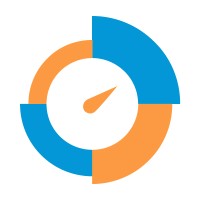Filter By
Data Projects
The Central Asia Barometer Survey is one of CAB's large-scale research projects, implemented regularly since 2017. Key highlights: Around 60 000 interviews since 2017; All Central Asian countries covered; 8 waves conducted to date; Conducted regularly twice a year (spring and autumn waves); Sample sizes of 1500 - 2000; TAPI and CATI methods; The core part of the questionnaire remains the same from one wave to another; Unique insights on attitudes towards foreign countries, international organizations and domestic politics, including elections, government policies, media usage, public health, security and economy.
The Central Asia Barometer Survey is one of CAB's large-scale research projects, implemented regularly since 2017. Key highlights: Around 60 000 interviews since 2017; All Central Asian countries covered; 8 waves conducted to date; Conducted regularly twice a year (spring and autumn waves); Sample sizes of 1500 - 2000; TAPI and CATI methods; The core part of the questionnaire remains the same from one wave to another; Unique insights on attitudes towards foreign countries, international organizations and domestic politics, including elections, government policies, media usage, public health, security and economy.
The Central Asia Barometer Survey is one of CAB's large-scale research projects, implemented regularly since 2017. Key highlights: Around 60 000 interviews since 2017; All Central Asian countries covered; 8 waves conducted to date; Conducted regularly twice a year (spring and autumn waves); Sample sizes of 1500 - 2000; TAPI and CATI methods; The core part of the questionnaire remains the same from one wave to another; Unique insights on attitudes towards foreign countries, international organizations and domestic politics, including elections, government policies, media usage, public health, security and economy.
The Central Asia Barometer Survey is one of CAB's large-scale research projects, implemented regularly since 2017. Key highlights: Around 60 000 interviews since 2017; All Central Asian countries covered; 8 waves conducted to date; Conducted regularly twice a year (spring and autumn waves); Sample sizes of 1500 - 2000; TAPI and CATI methods; The core part of the questionnaire remains the same from one wave to another; Unique insights on attitudes towards foreign countries, international organizations and domestic politics, including elections, government policies, media usage, public health, security and economy.
The Central Asia Barometer Survey is one of CAB's large-scale research projects, implemented regularly since 2017. Key highlights: Around 60 000 interviews since 2017; All Central Asian countries covered; 8 waves conducted to date; Conducted regularly twice a year (spring and autumn waves); Sample sizes of 1500 - 2000; TAPI and CATI methods; The core part of the questionnaire remains the same from one wave to another; Unique insights on attitudes towards foreign countries, international organizations and domestic politics, including elections, government policies, media usage, public health, security and economy.
The Central Asia Barometer Survey is one of CAB's large-scale research projects, implemented regularly since 2017. Key highlights: Around 60 000 interviews since 2017; All Central Asian countries covered; 8 waves conducted to date; Conducted regularly twice a year (spring and autumn waves); Sample sizes of 1500 - 2000; TAPI and CATI methods; The core part of the questionnaire remains the same from one wave to another; Unique insights on attitudes towards foreign countries, international organizations and domestic politics, including elections, government policies, media usage, public health, security and economy.
The Central Asia Barometer Survey is one of CAB's large-scale research projects, implemented regularly since 2017. Key highlights: Around 60 000 interviews since 2017; All Central Asian countries covered; 8 waves conducted to date; Conducted regularly twice a year (spring and autumn waves); Sample sizes of 1500 - 2000; TAPI and CATI methods; The core part of the questionnaire remains the same from one wave to another; Unique insights on attitudes towards foreign countries, international organizations and domestic politics, including elections, government policies, media usage, public health, security and economy.
The Central Asia Barometer Survey is one of CAB's large-scale research projects, implemented regularly since 2017. Key highlights: Around 60 000 interviews since 2017; All Central Asian countries covered; 8 waves conducted to date; Conducted regularly twice a year (spring and autumn waves); Sample sizes of 1500 - 2000; TAPI and CATI methods; The core part of the questionnaire remains the same from one wave to another; Unique insights on attitudes towards foreign countries, international organizations and domestic politics, including elections, government policies, media usage, public health, security and economy.
The Labour Force Survey (LFS) is a monthly survey of Canadian households carried out by Statistics Canada. It was developed after the Second World War to satisfy a need for reliable and timely data on the labour market due to the massive labour market changes involved in the transition from a war to peace-time economy. The objectives of the LFS have been to divide the working-age population into three mutually exclusive labour force status categories (employed, unemployed, and not in the labour force) and to provide descriptive and explanatory data on each of these groups. With the release of the survey results only 10 days after the completion of data collection, the LFS estimates are the first of the major monthly economic data series to be released. The LFS is the source of Canada's official unemployment rates, including the rates used by Employment and Social Development Canada in the calculation of Employment Insurance (EI) eligibility and benefit criteria. Data from the survey also provide information on major labour market trends, such as shifts in employment across industrial sectors, hours worked and labour force participation.











